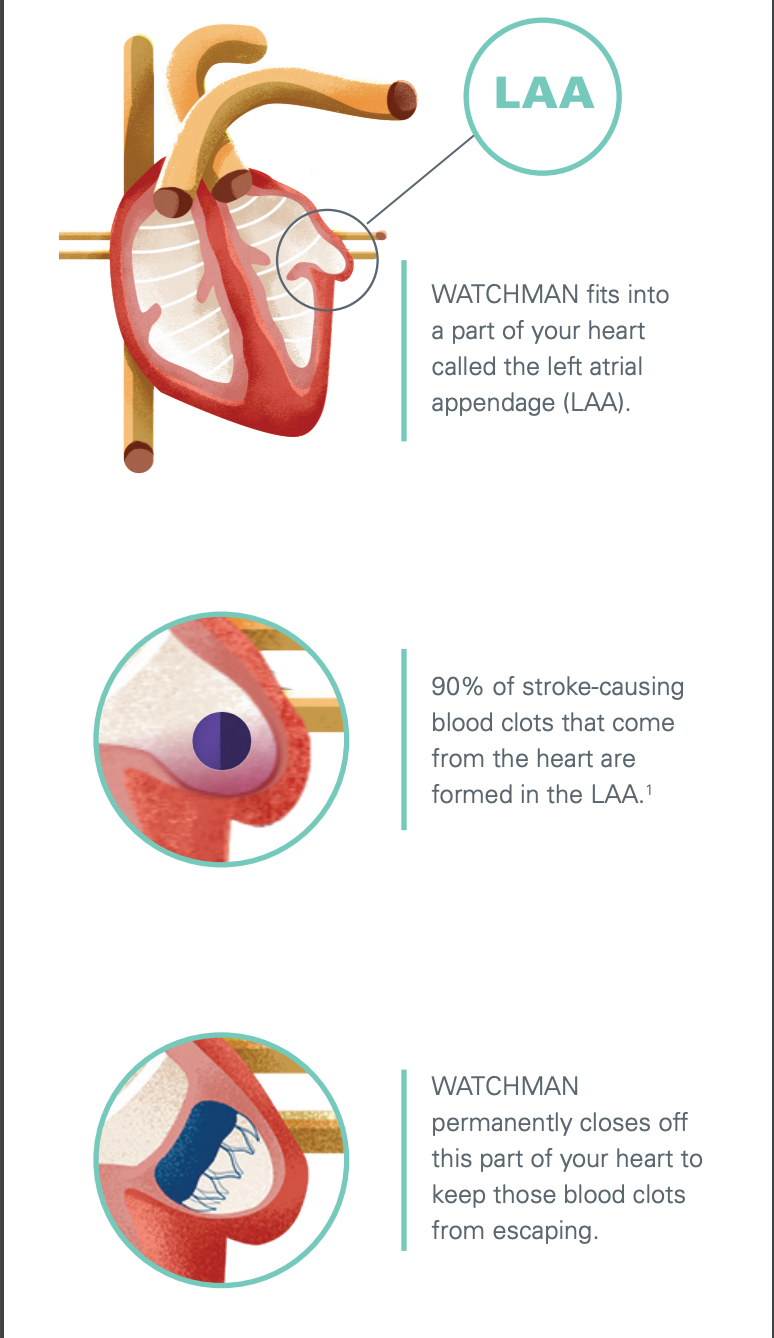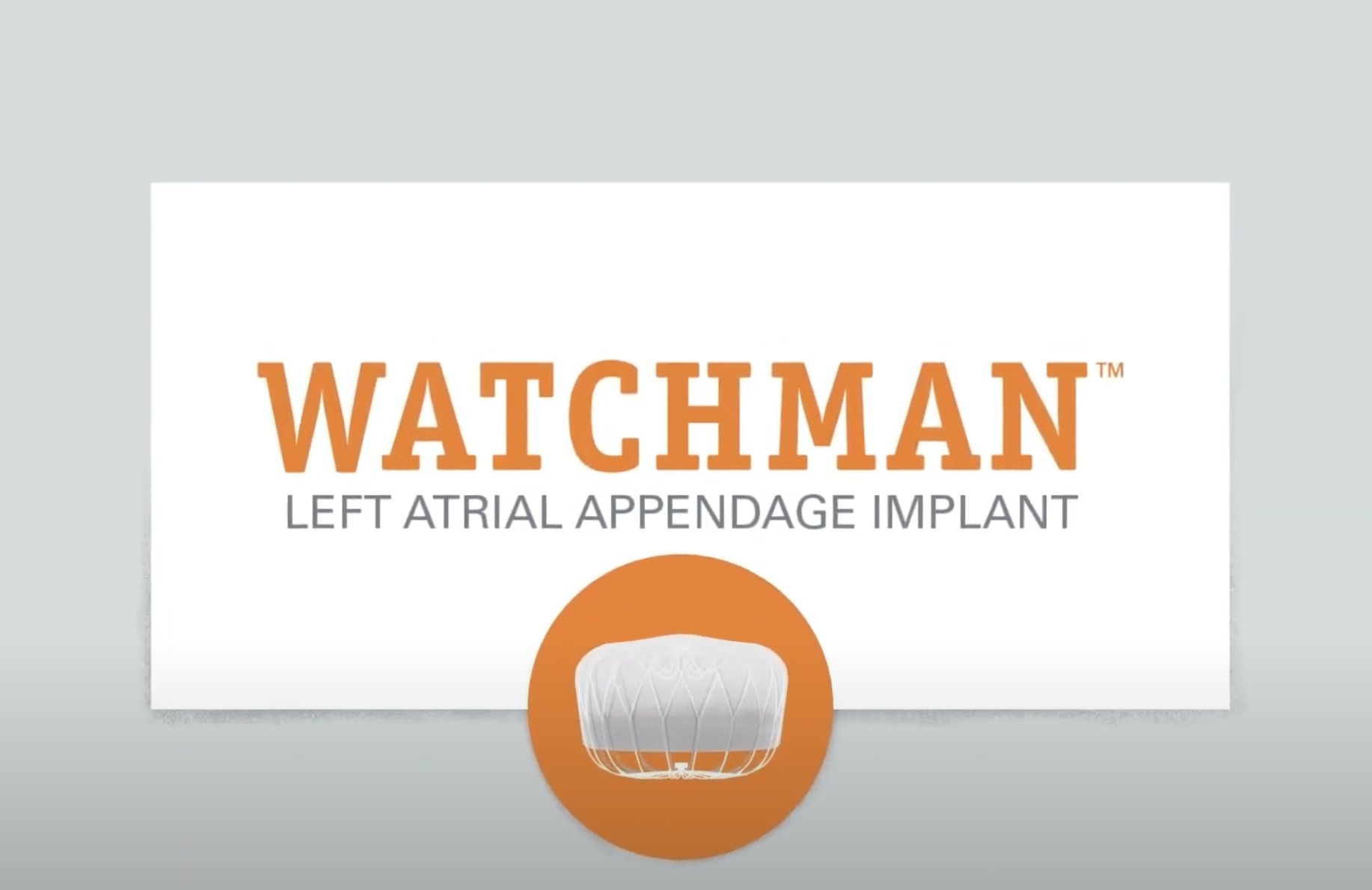Reducing the risk of stroke
Stroke is the leading cause of disability in the U.S., and patients with atrial fibrillation are five times more likely to suffer stroke than those with normal heart rhythm.
WATCHMAN reduces stroke risk in people with atrial fibrillation not caused by a heart valve problem. It works differently from blood thinners like warfarin. It is a permanent implant that closes off a part of the heart where blood clots commonly form, called the left atrial appendage.
In a clinical trial, 9 out of 10 people were able to stop taking warfarin just 45 days after getting WATCHMAN. At one year, 99 out of 100 people were able to discontinue warfarin. This is important to many patients concerned about bleeding risk and the long-term use of warfarin. Worldwide, more than 300,000 people have received the WATCHMAN implant. Over 500 Watchman implants have been completed here at UK King's Daughters since 2020, with more than 200 completed in 2023 alone.

The WATCHMAN implant is placed using minimally invasive techniques in the cardiac catheterization lab.
To implant WATCHMAN, the physician will make a small incision in the upper leg and insert a narrow tube (catheter). The catheter is guided through the blood vessels to the heart and the left atrial appendage (LAA).
Once positioned, WATCHMAN is deployed and the catheter is removed. Patients are usually able to return home the next day. Following the procedure, patients will continue to take a blood thinner for a period of time until the LAA is permanently closed.
Want to know more? Contact our Structural Heart team at (606) 408-2569.
A patient story: Janet Webb & Watchman
This is the Watchman Implant
Click on the image below to view a video explaining the Watchman implant, provided by Boston Scientific, the makers of Watchman.












